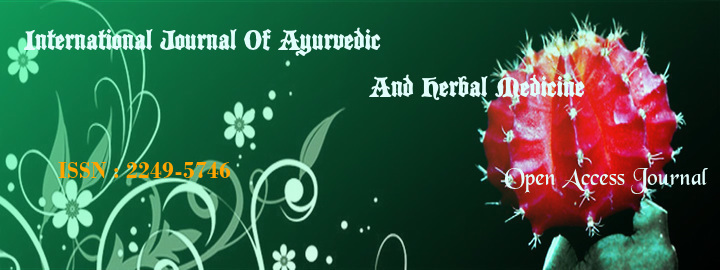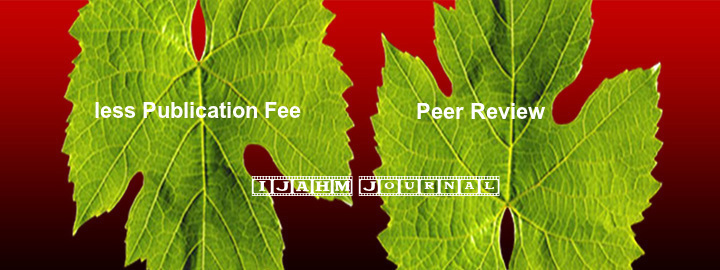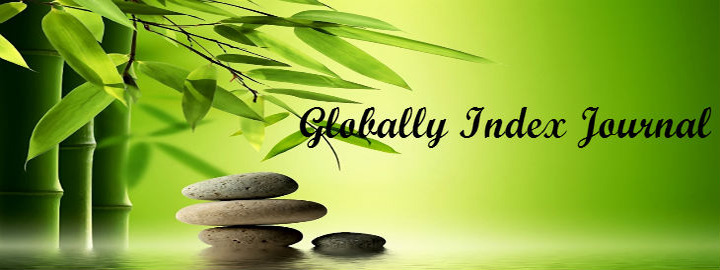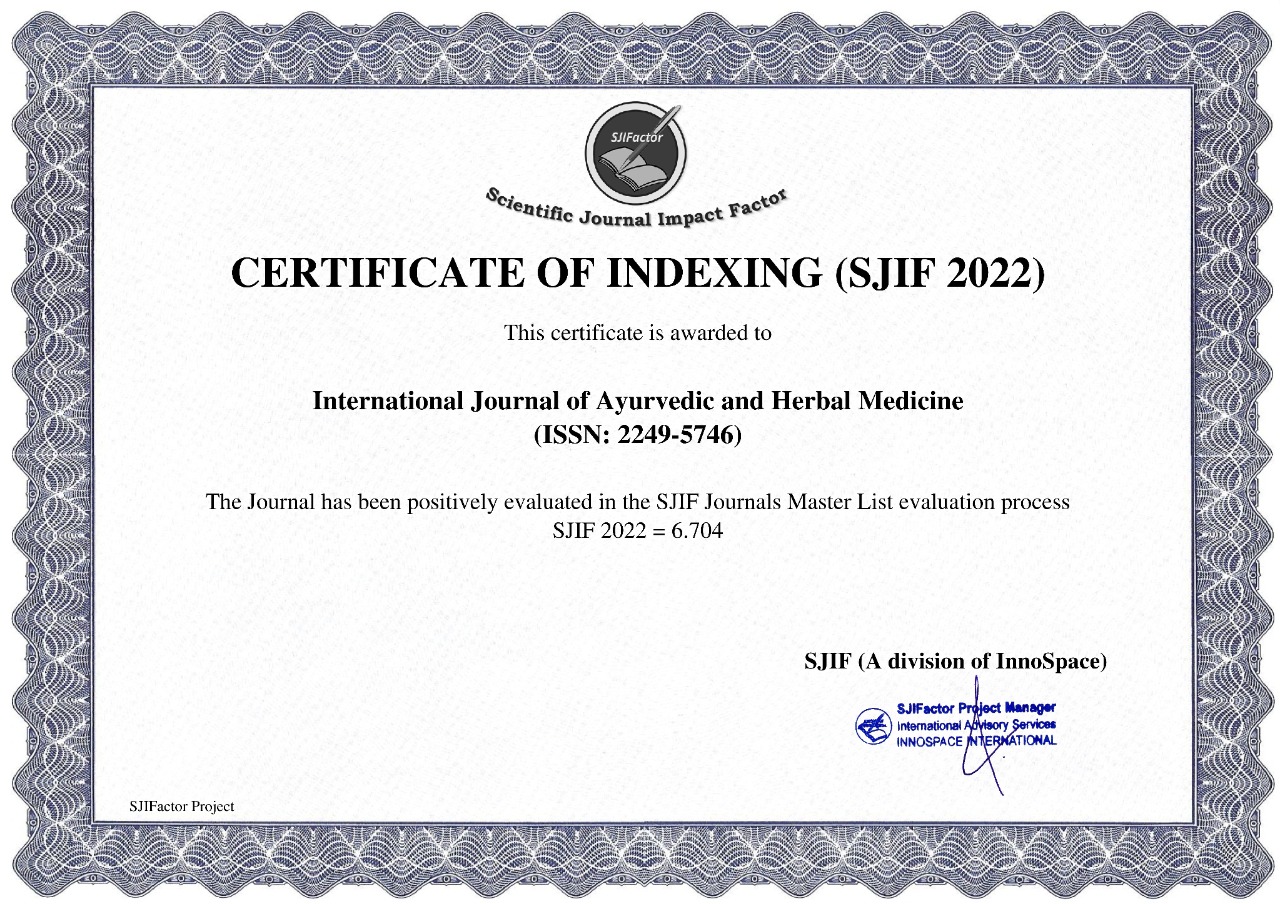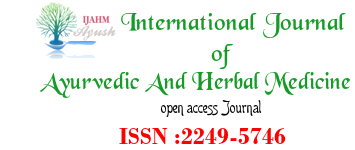


Anuja Rana1, Dr. Shuchi Mitra2, Dr. Usha Sharma3, Dr Khem Chand Sharma4
DOI : http://dx.doi.org/10.47191/ijahm/v12i2.05
1P.G Scholar, P.G Department of Ras Shastra evam Bhaishajya Kalpana, Uttarakhand Ayurveda University, Rishikul Campus, Haridwar.
2 Associate Professor, Department of Ras Shastra evam Bhaishajya Kalpana, Uttarakhand Ayurveda University, Rishikul Campus, Haridwar.
3Associate Professor, Department of Ras Shastra evam Bhaishajya Kalpana, Uttarakhand Ayurveda University, Rishikul Campus, Haridwar.
4Professor and H.O.D, P.G Department of Ras Shastra evam Bhaishajya Kalpana, Uttarakhand Ayurveda University, Rishikul Campus, Haridwar.
P.G Department of Rasa Shastra evum Bhaishajya Kalpana, Uttarakhand Ayurved University, Rishikul Campus Haridwar Pin Code: 249401
ABSTRACT:
The notion of “Fair is beautiful” is well established beauty ideal in Indian society. Skin-lightening products are commercially available for cosmetic purposes to obtain lighter skin complexion. In the present times, natural products are more in demand than their synthetic counterparts. There are numerous Varnya formulations scattered throughout the Ayurvedic texts, one such formulation is Kanaka Taila. Formulation of Kanaka Taila includes decoction of Yasthimadhu (Glycyrrhizha glabra), Tila taila (Sesamum indicum) and paste of Priyangu (Callicarpa macrophylla), Manjistha (Rubia cordifolia), Utapala (Nymphaea stellata) and Nagkesara (Messua ferrae). The present review is undertaken for screening various varnya formulations in classical texts of Ayurveda and also to highlight the skin lightening action of Kanaka Taila by analysing its ingredients critically.
KEYWORDS - Kanaka Taila, Skin lightening, Varnya formulations, Tyrosinase inhibition
REFERENCE :
- Clifford, M. M., & Walster, E. (1973). The effect of physical attractiveness on teacher expectations. Sociology of education, 248-258.
- Rhode, D. L. (2014). The Beauty Bias: The Injustice of Appearance in Life and Law. New York, Oxford University Press, pp.1-272.
- Hazra, J., & Panda, A. K. (2013). Concept of beauty and ayurveda medicine. J Clin Exp Dermatol Res, 4(178), 2.
- Sharma, K., Joshi, N., & Goyal, C. (2015). Critical review of Ayurvedic Varṇya herbs and their tyrosinase inhibition effect. Ancient Science of life, 35(1), 18.
- Amodu, M. O. (2018). Knowledge, attitude and practice of skin whitening among female university students in Northeastern Nigeria. Open Access Library Journal, 5(04), 1.
- Costin, G. E., & Hearing, V. J. (2007). Human skin pigmentation: melanocytes modulate skin color in response to stress. The FASEB journal, 21(4), 976-994.
- Ito, S., & Wakamatsu, K. (2003). Quantitative analysis of eumelanin and pheomelanin in humans, mice, and other animals: a comparative review. Pigment cell research, 16(5), 523-531.
- Parvez, S., Kang, M., Chung, H. S., Cho, C., Hong, M. C., Shin, M. K., & Bae, H. (2006). Survey and mechanism of skin depigmenting and lightening agents. Phytotherapy Research: An International Journal Devoted to Pharmacological and Toxicological Evaluation of Natural Product Derivatives, 20(11), 921-934.
- Zaidi, K. U., Ali, S. A., Ali, A., & Naaz, I. (2019). Natural tyrosinase inhibitors: Role of herbals in the treatment of hyperpigmentary disorders. Mini Reviews in Medicinal Chemistry, 19(10), 796-808.
- Lim, J. W., Ha, J. H., Jeong, Y. J., & Park, S. N. (2018). Anti-melanogenesis effect of dehydroglyasperin C through the downregulation of MITF via the reduction of intracellular cAMP and acceleration of ERK activation in B16F1 melanoma cells. Pharmacological Reports, 70(5), 930-935.
- Ebanks, J. P., Wickett, R. R., & Boissy, R. E. (2009). Mechanisms regulating skin pigmentation: the rise and fall of complexion coloration. International Journal of Molecular Sciences, 10(9), 4066-4087.
- Hakozaki, T., Minwalla, L., Zhuang, J., Chhoa, M., Matsubara, A., Miyamoto, K., ... & Boissy, R. E. (2002). The effect of niacinamide on reducing cutaneous pigmentation and suppression of melanosome transfer. British Journal of Dermatology, 147(1), 20-31.
- Parvez, S., Kang, M., Chung, H. S., Cho, C., Hong, M. C., Shin, M. K., & Bae, H. (2006). Survey and mechanism of skin depigmenting and lightening agents. Phytotherapy Research: An International Journal Devoted to Pharmacological and Toxicological Evaluation of Natural Product Derivatives, 20(11), 921-934.
- Wan, P., Hu, Y., & He, L. (2011). Regulation of melanocyte pivotal transcription factor MITF by some other transcription factors. Molecular and cellular biochemistry, 354(1), 241-246.
- Kawakami, A., & Fisher, D. E. (2017). The master role of microphthalmia-associated transcription factor in melanocyte and melanoma biology. Laboratory investigation, 97(6), 649-656.
- D’Mello, S. A., Finlay, G. J., Baguley, B. C., & Askarian-Amiri, M. E. (2016). Signaling pathways in melanogenesis. International journal of molecular sciences, 17(7), 1144.
- García‐Borrón, J. C., Sánchez‐Laorden, B. L., & Jiménez‐Cervantes, C. (2005). Melanocortin‐1 receptor structure and functional regulation. Pigment cell research, 18(6), 393-410.
- Swope, V. B., & Abdel-Malek, Z. A. (2018). MC1R: Front and center in the bright side of dark eumelanin and DNA repair. International journal of molecular sciences, 19(9), 2667.
- Lasaga, M., Debeljuk, L., Durand, D., Scimonelli, T. N., & Caruso, C. (2008). Role of α-melanocyte stimulating hormone and melanocortin 4 receptor in brain inflammation. Peptides, 29(10), 1825-1835.
- Wu, X., & Hammer, J. A. (2014). Melanosome transfer: it is best to give and receive. Current opinion in cell biology, 29, 1-7.
- Ando, H., Niki, Y., Ito, M., Akiyama, K., Matsui, M. S., Yarosh, D. B., & Ichihashi, M. (2012). Melanosomes are transferred from melanocytes to keratinocytes through the processes of packaging, release, uptake, and dispersion. Journal of Investigative Dermatology, 132(4), 1222-1229.
- Gillbro, J. M., & Olsson, M. J. (2011). The melanogenesis and mechanisms of skin‐lightening agents–existing and new approaches. International Journal of cosmetic science, 33(3), 210-221.
- Yamaguchi, Y., Brenner, M., & Hearing, V. J. (2007). The regulation of skin pigmentation. Journal of biological chemistry, 282(38), 27557-27561.
- Xue, M., Lin, H., Zhao, R., Liang, H. P. H., & Jackson, C. (2017). The differential expression of protease activated receptors contributes to functional differences between dark and fair keratinocytes. Journal of dermatological science, 85(3), 178-185.
- Kamakshi, R. (2012). Fairness via formulations: a review of cosmetic skin-lightening ingredients. Journal of cosmetic science, 63(1), 43-54.
- Muddathir, A. M., Yamauchi, K., Batubara, I., Mohieldin, E. A. M., & Mitsunaga, T. (2017). Anti-tyrosinase, total phenolic content and antioxidant activity of selected Sudanese medicinal plants. South African journal of botany, 109, 9-15.
- Valverde, P., Manning, P., McNEIL, C. J., & Thody, A. J. (1996). Activation of tyrosinase reduces the cytotoxic effects of the superoxide anion in B16 mouse melanoma cells. Pigment cell research, 9(2), 77-81.
- Damle, M. (2014). Glycyrrhiza glabra (Liquorice)-a potent medicinal herb. International journal of herbal medicine, 2(2), 132-136.
- Pillaiyar, T., Manickam, M., & Namasivayam, V. (2017). Skin whitening agents: Medicinal chemistry perspective of tyrosinase inhibitors. Journal of enzyme inhibition and medicinal chemistry, 32(1), 403-425.
- Shastri K, Charak Samhita, Chaukhamba Sanskrit Sansthan, Edition 2006, Part 2, Page No.633.
- I. Ras Ratna Samucchaya, Chaukhambha Sanskrit Sansthan, Edition 2013, Page-320.
- I. Ras Ratna Samucchaya, Chaukhambha Sanskrit Sansthan, Edition 2013, Page-321.
- Bajpayee, P.J. Chakradatta, Khemraj Shrikrishnadas Press, Edition 2006, Page-237.
- S, Sharangdhara Samhita, Chaukhambha Orientalia,Varanasi, Edition 2017, Page 427.
- Bajpayee, P.J. Chakradatta, Khemraj Shrikrishnadas Press, Edition 2006, Page-238.
- Bajpayee, P.J. Chakradatta, Khemraj Shrikrishnadas Press, Edition 2006, Page-239.
- A, Bhaishajya Ratnavali, Chaukhamba Sanskrit Bhawan, Edition 2006, Part-3, Page 188.
- G, Bharat Bhaishajya Ratnakar, Motilal Banarasidas Publication, Part-5, Edition 1985, Page- 77.
- I. Gadanigraha, Chaukhamba Sanskrit Sansthan, edition 2005, page 400.
- A, Bhaishajya Ratnavali, Chaukhamba Sanskrit Bhawan, Edition 2006, Part-3, Page 187.
- Ayurvedic Formularly of India, Part 2.
- Sharma P.V. Dravya Guna Vigyana, Chaukhamba Bharti Academy, edition 2012 Part 2 Page 253,120,781, 783, 800,718, 713.
- Sharma P.C, Yelne M.B, Dennis T.J. Database on medicinal plants used in Ayurveda. Vol 3. CCRAS, New Delhi, 2005, pg: 561-566
- Sharma P.C, Yelne M.B, Dennis T.J. Database on medicinal plants used in Ayurveda. Vol 5. CCRAS, New Delhi, 2008, pg: 417-420.
- Billore K.V, Yelne M.B, Dennis T.J, Chaudhary B.G. Database on medicinal plants used in Ayurveda. Vol 7. CCRAS, New Delhi, 2005, pg 353-356.
- Sharma P.C, Yelne M.B, Dennis T.J. Database on medicinal plants used in Ayurveda. Vol 5. CCRAS, New Delhi, 2008, pg: 171-176.
- Billore K.V, Yelne M.B, Dennis T.J, Chaudhary B.G. Database on medicinal plants used in Ayurveda. Vol 7. CCRAS, New Delhi, 2005, pg 361-366.
- Sharma P.C, Yelne M.B, Dennis T.J. Database on medicinal plants used in Ayurveda. Vol 1. CCRAS, New Delhi, 2005, pg: 200-206.
- B. Bhavprakash Nighantu, Chaukhambha Sanskrit Sansthan, Edition 2004, Part 1, Page-65.
- K. Charak Samhita, Chaukhambha Sanskrit Sansthan, Edition 2004, Part-1, Page- 61.
- Saeedi, M., Morteza‐Semnani, K., & Ghoreishi, M. R. (2003). The treatment of atopic dermatitis with licorice gel. Journal of Dermatological Treatment, 14(3), 153-157.
- Saha, R. (2012). Cosmeceuticals and herbal drugs: practical uses. International Journal of Pharmaceutical Sciences and Research, 3(1), 59.
- Pastorino, G., Cornara, L., Soares, S., Rodrigues, F., & Oliveira, M. B. P. (2018). Liquorice (Glycyrrhiza glabra): A phytochemical and pharmacological review. Phytotherapy research, 32(12), 2323-2339.
- Castangia, I., Caddeo, C., Manca, M. L., Casu, L., Latorre, A. C., Díez-Sales, O., ... & Manconi, M. (2015). Delivery of liquorice extract by liposomes and hyalurosomes to protect the skin against oxidative stress injuries. Carbohydrate polymers, 134, 657-663.
- Hasan, M. K., Ara, I., Mondal, M. S. A., & Kabir, Y. (2021). Phytochemistry, pharmacological activity, and potential health benefits of Glycyrrhiza glabra. Heliyon, e07240.
- B. Bhavprakash Nighantu, Chaukhambha Sanskrit Sansthan, Edition 2004, Part 1, Page-779.
- Miyake, Y., Fukumoto, S., Okada, M., Sakaida, K., Nakamura, Y., & Osawa, T. (2005). Antioxidative catechol lignans converted from sesamin and sesaminol triglucoside by culturing with Aspergillus. Journal of agricultural and food chemistry, 53(1), 22-27.
- Lin, T. K., Zhong, L., & Santiago, J. L. (2018). Anti-inflammatory and skin barrier repair effects of topical application of some plant oils. International journal of molecular sciences, 19(1), 70.
- Tripathi I, Raj Nighantu, Chaukhamba Krishna Academy Varanasi, Edition 2010, page 404.
- Paprikar, M., & Paprikar, M. (2021). Systematic review of Priyangu (Callicarpa macrophylla). Journal of Ayurveda and Integrated Medical Sciences, 6(5), 227-233.
- Devi Priya, M., & Siril, E. A. (2014). Traditional and modern use of indian madder (Rubia cordifolia L.): an overview. Int J Pharm Sci Rev Res, 25(1), 154-164.
- Vaibhav, S., & Lakshaman, K. (2012). Tyrosinase enzyme inhibitory activity of selected Indian herbs. Int J Res Pharm Biomed Sci, 3, 977-82.
- Sharma P.V, Dhanvantari Nighantu, Chaukhamba Bharti Academy, edition 2005, page 91.
- Menon, J. M., Vijil, V. V., Aswathi, P. S., Nimitha, K. N., VIJAYALAKSHMI, S., SRUTHI, P., & KURIAN, N. K. (2016). Evaluation of anti-melanogenic activity of Pterocarpus santalinus L. using bacterial system. Biotechnological Research, 2(2), 58-60.
- Hridya, H., Amrita, A., Mohan, S., Gopalakrishnan, M., Dakshinamurthy, T. K., Doss, G. P., & Siva, R. (2016). Functionality study of santalin as tyrosinase inhibitor: A potential depigmentation agent. International journal of biological macromolecules, 86, 383-389.
- Navada, K. K., & Vittal, R. R. (2014). Ethnomedicinal value of Pterocarpus santalinus (Linn. f.), a Fabaceae member. Oriental Pharmacy and Experimental Medicine, 14(4), 313-317.
- Tripathi I, Raj Nighantu, Chaukhamba Krishna Academy Varanasi, Edition 2010, Page 334.
- Nagavani, V., & Rao, T. R. (2010). Evaluation of antioxidant potential and qualitative analysis of major polyphenols by RP-HPLC in Nymphaea nouchali Burm flowers. International Journal of Pharmacy and Pharmaceutical Sciences, 2(4), 98-104.
- Rajagopal, K., & Sasikala, K. (2008). Antihyperglycaemic and antihyperlipidaemic effects of Nymphaea stellata in alloxan-induced diabetic rats. Singapore medical journal, 49(2), 137.
- Jahan, I., Mamun, M. A. A., Hossen, M. A., Sakir, J. A. M. S., Shamimuzzaman, M., Uddin, M. J., & Haque, E. (2012). Antioxidant, analgesic and anti-inflammatory activities of Nymphaea nouchali flowers. Res J Pharmacol, 6(5), 62-70.
- Adewusi, E. A., & Afolayan, A. J. (2010). A review of natural products with hepatoprotective activity. Journal of medicinal plants research, 4(13), 1318-1334.
- Das, D. R., Sachan, A. K., Mohd, S., & Gangwar, S. S. (2012). Nymphaea stellata: a potential herb and its medicinal importance. Journal of Drug Delivery and Therapeutics, 2(3).
- Shen, T., Heo, S. I., & Wang, M. H. (2012). Involvement of the p38 MAPK and ERK signaling pathway in the anti-melanogenic effect of methyl 3, 5-dicaffeoyl quinate in B16F10 mouse melanoma cells. Chemico-biological interactions, 199(2), 106-111.
- Sawa, T., Nakao, M., Akaike, T., Ono, K., & Maeda, H. (1999). Alkylperoxyl radical-scavenging activity of various flavonoids and other phenolic compounds: implications for the anti-tumor-promoter effect of vegetables. Journal of Agricultural and Food Chemistry, 47(2), 397-402
- Fan, M., Zhang, G., Hu, X., Xu, X., & Gong, D. (2017). Quercetin as a tyrosinase inhibitor: Inhibitory activity, conformational change and mechanism. Food Research International, 100, 226-233.
- B. Bhavprakash Nighantu, Chaukhambha Sanskrit Sansthan, Edition 2004, Part 1, Page-230.
- Zar Wynn Myint, K., Kido, T., Kusakari, K., Prasad Devkota, H., Kawahara, T., & Watanabe, T. (2021). Rhusflavanone and mesuaferrone B: tyrosinase and elastase inhibitory biflavonoids extracted from the stamens of Mesua ferrea L. Natural product research, 35(6), 1024-1028.
index







